2040-2043
The story of Lycoris and Persicaria of 90wish is one with a long history between two geniuses crossing paths. Both Lycoris of Sangvis Ferri and Persicaria of 16Lab were involved in one of the most significant innovations in the history of Doll robots.
Introduction to Lycoris

I, too, once thought that the best of human artifice was nothing more than crude imitations of God's creations. I also once believed that there was a limit that the works of man could never pass. But it would seem, my dear, that we were both wrong.
Naturally, the implication of this realization frightens me. If we open this Pandora's box, what awaits us within?
- Lycoris, Polarized Light Chapter 5
Born in Northern Europe, Lycoris’ life was relatively straightforward until the crisis in 2035. After the Northern Lights Incident, the Scandinavian Peninsula was in ruins. Lycoris’ father was terrified by the situation, so he fled to Moscow with Lyco. For some unknown reason, his mother was left behind in Scandinavia. For the next five years, Lyco was raised in the New Soviet Union, always feeling like an outsider. He eventually enrolled at the National University of Moscow, studying mathematics and automation. While in Moscow, he proved himself by receiving full marks in assembly language. While still an undergraduate at the time, he later transferred from Moscow to the Leipzig University of Karl Marx in Leipzig, Germany. Though not a native to the region, he felt Saxony was the place for him to be. Furthermore, Leipzig University had the best automation department in the continent, likely being a pull factor for Lyco. And by September 10th, 2040, he was enrolled and ready to begin his semester.
University of Leipzig - 2040
Lyco quickly became acquainted with the university, getting involved in a small research group in the automation department by December. The team was composed of graduate and postgraduate students, with Lyco being the odd one out. The head of the team was a postgraduate student named Persica, who took notice of Lyco’s accomplishments and expertise despite still being an undergraduate.
Persicaria & The Automation Department

All this came about because of my research, so I need to take action to make amends. William has taken too many loved ones away from me... I think it's time I took a stand against him.
- Persicaria, Chapter 13
For reference: Persicaria is her full name, but she's commonly referred to as Persica throughout the lore and story.
According to Lyco’s journals, Persica was an interesting individual. To call her a hard worker would be an understatement; she was a genius who survived solely on biscuits, coffee, and sugar. For her, the only thing that truly mattered was her research and academics, with no need for entertainment, leisure time, or even sleep in some instances. There was no need for notes, manuscripts, or calculators since they would only lengthen the time her work took. Unfortunately for her fellow researchers, her exceptional work ethic often impacted those around her. If she was dedicated to a project, she’d completely ignore time off for the holidays to continue her team’s work. This led to some members of her team, Lyco included, becoming workhorses.
When Lyco joined her team, he remained mostly uninvolved in their more advanced projects. Around Christmas, the two grew to understand each other better. Persica had been keeping tabs on Lyco’s previous accomplishments at Moscow University and had offered him an opportunity despite being an undergraduate. Blaming her tutor for being too busy, she instead took on a new project involving Doll robots and their frameworks. Lyco was unaware of the purpose of the project until the following January, but he nevertheless joined the project group.
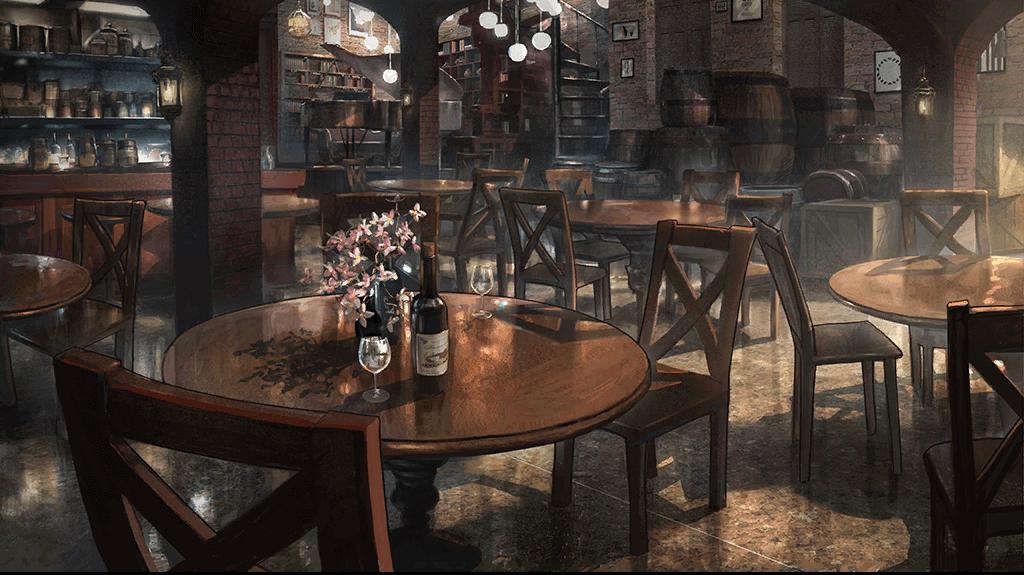
During New Year’s Eve, Lyco left the institute for the night, heading to a nearby local bar to pass into the new year. Late in the evening, Lyco entered the old bar opposite the St. Thomas Church in the downtown area. Despite not being much of a drinker or a fan of the bartenders in Germany, he chose to go there for a bite to eat. While speaking to the bartender, an older figure next to him recognized him as a foreigner and decided to order a plate of smoked fish for him. The two spoke for a while, and Lyco thanked the man for the meal. This man was an Englishman living in Germany. He told Lyco he worked as a news editor in his own small news broadcast company called WAVE Tech (WAVE Technology Corporation in 2064). He usually wrote reports for larger news agencies throughout Germany and was always on the lookout for exclusives about the political situation in the country. After explaining his job, he properly introduced himself to Lyco. His name was Griffin.

Logo of WAVE Technology led by Sir Griffin Lyons.
Doll Engineering Project - 2041-2044
With the dawn of a new year, Lyco returned to the automation department, now onboard with Persica’s project team. By January 7th, Lyco had determined the subject of the project was the optimization of Doll robot frameworks. This project had been offered to the automation department by an unknown group. The requirements and conditions of the Doll project were unusually strict and seemed to be written by someone who lacked any engineering and design background. After the Soviets unveiled the ALR-52P Doll in 2036, many countries around the world tried to build their own Dolls, but the majority lacked the capabilities of IOP’s 52P. Unlike the institutes throughout the world, the project that lay before the Leipzig team was not an industrial robot. To Lyco, the team couldn’t complete the project within the time allotted, and they were likely working on a government project. Although he was unaware at the time, the project was likely for the Bundeswehr.
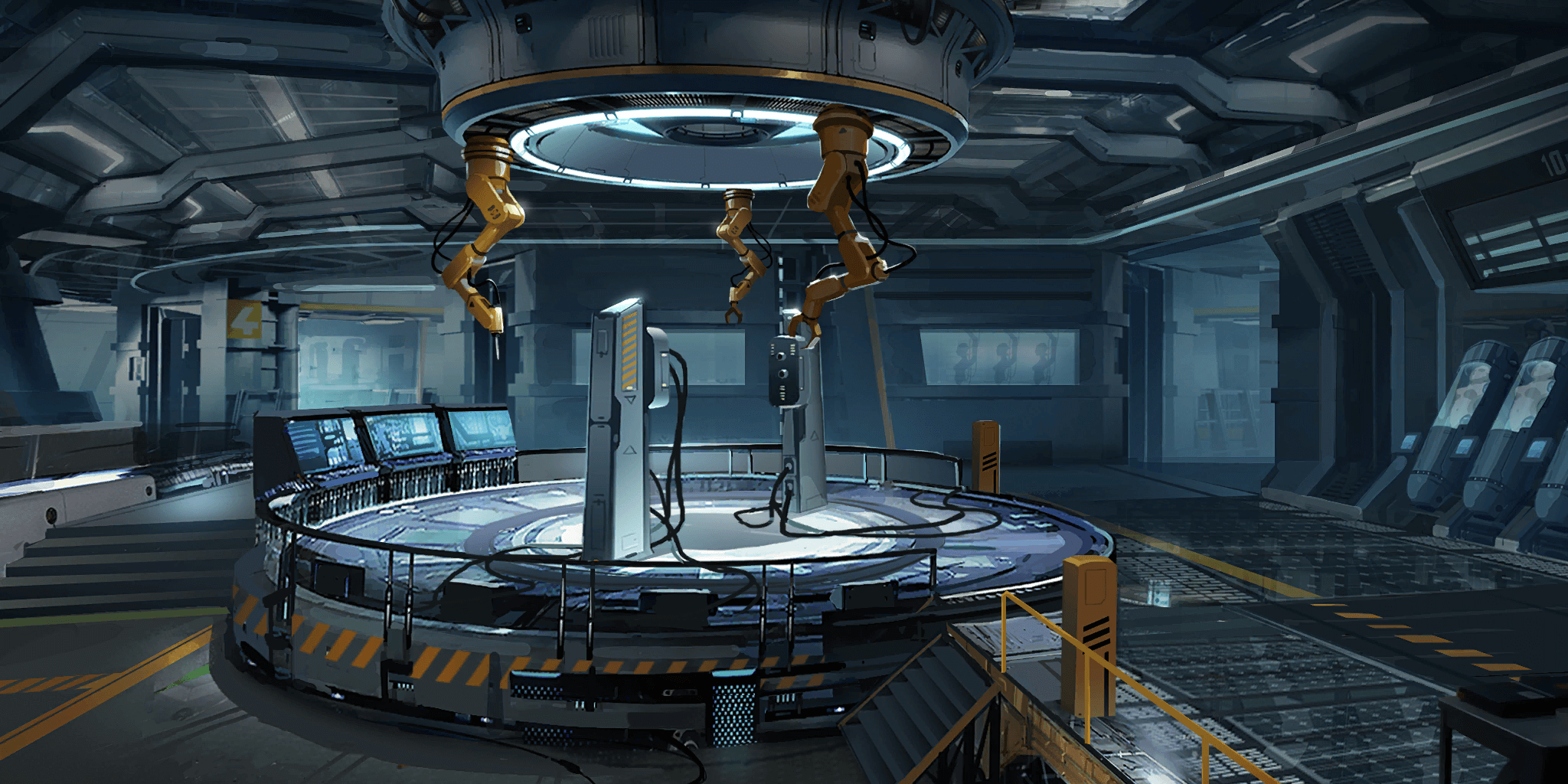
Persica’s research group had a momentous task before them, and the requirements were far too stringent. The team needed to meet a list of demands, each more complicated than the last. The requirements included: the ability to share communications and data between machines, automating the man-machine command interface, a complex decision-making tree for the artificial neural network, terrain adaption technology, the universality of parts, a replaceable core, and lastly, a command nexus capable of relaying commands to other Dolls. The design requirements for the frameworks seemed exceptional, and the chances of their team meeting all of them were nil. Though the task was improbable, Lyco finally understood why he, of all people, was chosen by Persica - his field of study was artificial intelligence and algorithms. To better understand the project, the team requested several reports and dissertations about AI and control theory from the university’s archives.
Relic Data from 90Wunsch
A week later, Lyco was in charge of collecting and reviewing old dissertations from the archives to help his team; however, many of these reports were not meant for public release or review. His curiosity got the best of him, so he chose to copy the data from the archives for himself. As he read through the reports, it was obvious the data was intentionally kept under wraps due to its nature. Some of these reports included: outsourced military material, blueprints of East German listening posts during the Cold War, and defense sector technical data and material from 1963. At the time, Lycoris was unaware of the vast trove of classified data he had discovered. These reports were not just old university documents but information gathered by the First Relic Investigation Working Group (90Wunsch) during the Cold War. Around six decades after the group ended their work at Urkunde-01, 90Wunsch's data was unsealed.
By February, Lyco knew he had stumbled across something far greater than him and his research group. While the majority of the data within the documents was gibberish or had been redacted, Lyco’s curiosity compelled him. He needed to decipher the data; surely, there was something of considerable importance given its classified nature. For the next several months, he continued to try to understand the data with little success. However, the information initially believed to be corrupted or gibberish was not. It had logic to it, but he lacked the understanding needed to decipher it. For his 2041 winter semester, he enrolled in multiple courses on information, encryption, and electronic signal processing in hopes of better understanding the files. And on October, 6th, 2042, he finally decoded the data.

A visual of the Relic Network or System, also known as “Zion”.
Lyco had finally pieced together what he was reading. The data was not gibberish - it had a consistent logic to it. The data was recorded from the First Relic at the Urkunde-01 Relic Site underneath the mountains in Thuringia. The 90Wunsch research group led by Colonel General Markus Wolf was recording data on electronic signals coming from the Relic. When electronic signals were put into the grooves of the Relic site, the Relic “responded” with a series of electronic communications outputs. 90Wunsch recorded this data and later stored it away in the university’s archives after the two German states reunified. All Lyco needed to do was find the “key” needed to decipher the information. Unbeknownst to him, the decoding of this data made him one of the most knowledgeable individuals in the world on Relic technology. It would be both a gift to his genius and a curse that would lead to his death during the Butterfly Incident in 2061. The future of this world could be decided by what lies beyond the other side of the Relics.
Project Completion
By August of 2043, Lyco’s findings greatly helped the team’s efforts in the Doll robot system. The Doll robot control system optimization project team was awarded for the success of their project dissertation in the university’s Great Report Hall. Due to the nature of Lyco’s discoveries from the 90Wunsch data, the true origins of where he got his data were never publicized in any released report. The only people who knew the true origins were Lycoris, Persica, and the project team. As an act of praise to the original East German group, Lyco recommended Persica change their group’s name to 90wish. After all, the 90 on their door plate came from the name of their lab - Automation Department Research Laboratory Labor-90.
2044-2049
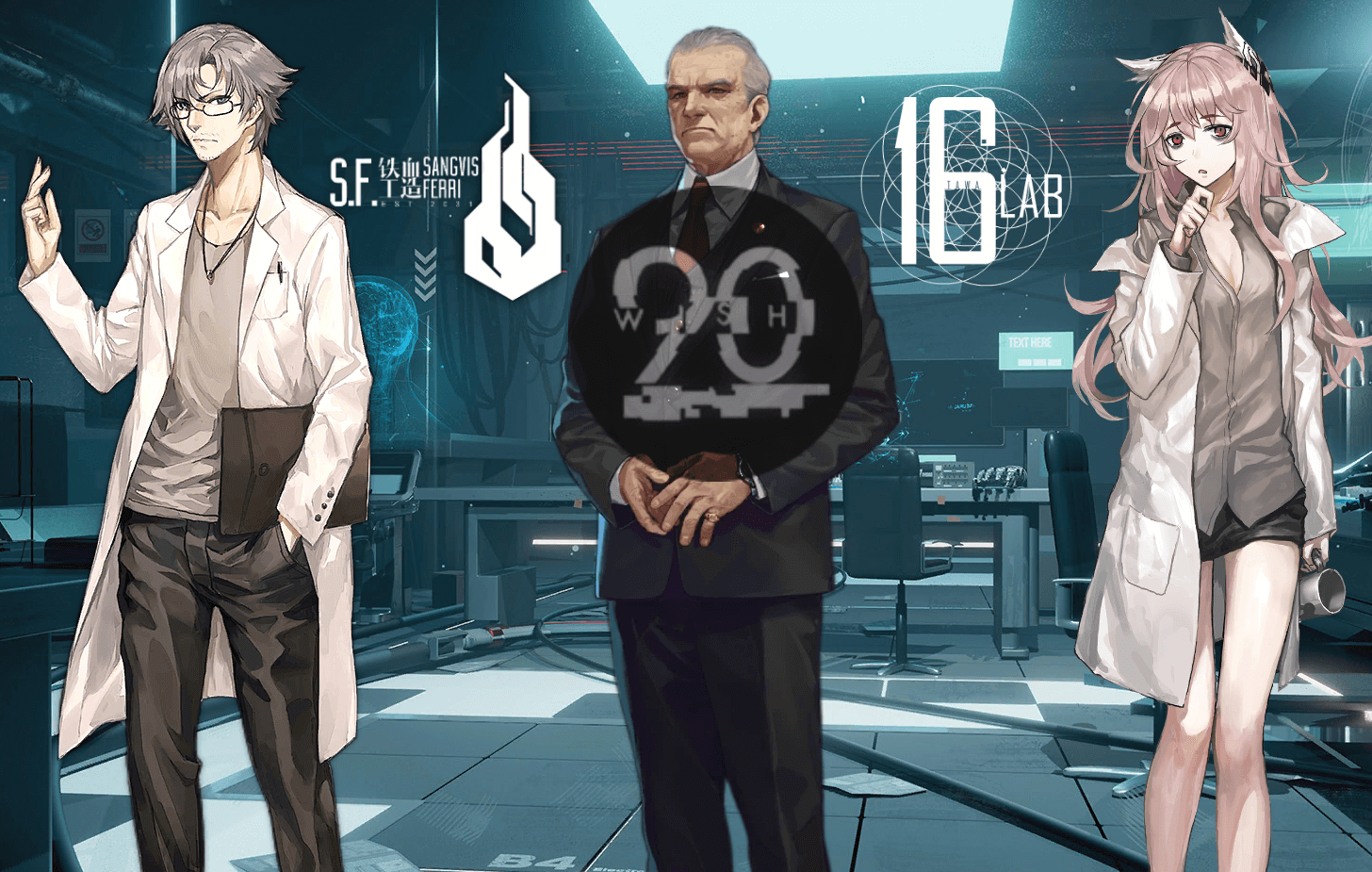
Lycoris, Rudolf von Oberstein, and Persicaria.
In September of 2044, Germany was slipping into an increasingly unstable state. After the conflict within the Bundestag over the 2045 budget, refugees and citizens erupted in anger. Protests had broken out across the nation against the Bundestag’s actions, with gradually more mobs forming in the streets. On September 18th, Lycoris received a letter from the Soviet embassy. It contained information about the unstable political situation in the country, warning Soviet citizens to return home before a crisis unfolded. For Lyco, this was the time to choose if he would stay in Germany with his research and Persica or move back home to the NUSSR. He chose to stay, and in 2045, the Leipzig University research personnel were relocated to the Max Planck Institute for Computer Science in West Germany.
Four years later, the world was engulfed in another world war. The researchers from Leipzig University had relocated to West Germany due to the deteriorating political situation in Germany before WWIII. Persica and Lycoris, two of the team’s top researchers, continued their work at the Max Planck Institute. It would be here that, for the next four years, the pair would continue their research and development of Doll frameworks.
Division in 90wish

Logo of the Bundeswehr Special Technology Development Group ("90wish").
In January 2049, the war in Europe was reaching its zenith. The Americans in West Germany continued their fight and were on the lookout for any possible Russian infiltrators. Out of fear of becoming a prisoner of war and being thrown into a camp, Lycoris was planning to leave Germany entirely. Aside from the threat of WWIII, 90wish’s internal structure was crumbling. In the months leading to their escape from West Germany, divisions were growing tense to the point of hostility between members over the topic of the publicly releasing 90wish research online. This division stemmed from the true purpose of 90wish as an R&D group for the GFR. 90wish’s official name was the Bundeswehr Special Technology Development Group, and any release of its information was likely considered as leaking state secrets. The only people aware of 90wish’s true purpose at the time were Persica, Lycoris, their fellow researchers, Havier Witkin of IOP, and Director Rudolf von Oberstein - the head of 90wish and the institute.

Minister Rudolf von Oberstein in 2064.
As one of the most powerful men in the modern German Democratic Republic, Rudolf von Oberstein is a well-known and well-connected figure in government and academia. In the 2040s up to an unknown date, Rudolf served as the Director of the Max Planck Institute for Computer Science. There, he led and oversaw the Bundeswehr Special Technology Development Group, also known as 90wish. While Lyco and Persica have long since left 90wish, the organization allegedly operates to this day, with Rudolf likely still serving as its head.
Before Persica and Lyco left the institute in 2049, Persica mentioned Rudolf was almost always in a bad mood, likely as a result of the deteriorating situation he found himself in. At the time, Rudolf was under a lot of fire and held a poor standing at the Relics Department. Approximately in early 2049, the unsteady situation in 90wish and the Relic Department forced Rudolf to evacuate. Fearing possible retaliation, he chose to relocate himself and his family out of harm's way. Rudolf's two children, Lunasia and a younger boy whose name we have yet to learn, were sent to the Oberstein family manor in the district of Neu-Tempelhof, Berlin. Here, the children would wait out the storm while their father went into hiding until at least 2051. As for the children's mother, her fate remains to be seen.
Rescue of Lycoris and Persica
Havier Witkin of IOP had been involved in dealings with some 90wish members after learning of the organization’s research sometime during WWIII. To Havier, its members were bright and skilled in their respective fields. When 90wish was facing internal divisions, Lyco and Persica were caught up in the storm and needed a way out. Additionally, both were in the possession of some very lucrative 90wish surveillance data, something any party interested would raise an eyebrow at. Upon hearing the news of their situation, Havier immediately paid a PMC security detail to escort them to safehouses, with Berezovich Kryuger as the head of the detail.
As they prepared to escape, Lycoris received a fake German ID from a man, possibly Griffin or Kryuger, that would allow him to pass through border security. From there, he and Persica would be escorted to IOP safehouses. During the actual rescue, the plan went off almost without a hitch, but some members of the protection detail were lost. Upon arriving at the safehouses, the two former 90wish members made contact with Havier; however, it was clear he was not saving them purely out of the kindness of his own heart. Their data was far too valuable, and he requested they work with IOP under the guise of a dummy company. After some debate, the pair agreed to work for Havier. Soon after, Havier opened a dummy company under a pseudonym to avoid any possible suspicion. They would operate as a separate entity, researching and developing various advanced technologies for IOP.
Principles of Automatic Control in a Relic Quantum Gravity System - 2049
In May of 2049, Lycoris returned safely to the NUSSR. While his exact whereabouts at the time are unstated, it can be assumed he was living in the city of Izhevsk in Udmurtia. While in the Ministry of Industry, Lyco submitted a substantial essay about upgrading the automated divisions’ command systems to the Ministry of Defence (MoD). Titled “Principles of Automatic Control in a Relic Quantum Gravity System”, Lyco’s essay hypothesized that the “Collapse Technology Quantized Gravitation Field” which vexed the academic world is a response from the Relic itself or a signal controlling the Relic system. Using publicly available Relic research as well as the findings of the 90Wunsch, he summarized the Relic as an “unimaginably complex automatic control system” and that the data collected by 90Wunsch was the signals being emitted from this system’s internal control circuit.
Current human technology is incapable of duplicating, replicating, and or generating this system. However, he explained that “through analysis of this signal, it is possible to understand the mathematical model and control theories within it.” The signal being emitted by the Relic originated from the control system for the Relics. Although Lyco was unaware of the specifics of the Relic network during his time, his theory regarding the Relic system proved correct. His mention of the “Quantized Gravitation Field” may be referring to the Reverse Collapse phenomenon during Relic activations, in which objects can be suspended in the air.
Reverse Collapse

The Tabasar-B “Starfish” in OKB-167 in Paldiski.
During Polarized Light, we witnessed this gravitational anomaly firsthand. Upon the Starfish’s partial activation, the phenomenon known as Reverse Collapse occurs. The blue glow of Reverse Collapse particles emanated from the Relic, causing localized distortions of gravity, resulting in one of the KCCO’s Assault Artillery mechs being flung into the air. During the fight with Elisa, these distortions cause our Dolls to be suspended in mid-air.
Isolation of Information
This essay gained serious attention from those within the ministries, eventually finding its way to the director of the Ministry of Internal Affairs (MVD), Viktor Zelinsky. While the field of Doll technology is not something the MVD would typically review, Zelinsky chose to read the essay regardless. As he read the essay, he started to fret. The data used in the document was without a doubt obtained through research into Relic technology. Panicked, he instantly requested a secure phone line to contact Mikhail “Old Misha” Tsvigun and an expert from signals for analysis. The essay was clearly written by someone who knew about Relic technology and may have been conducting illegal Relic research. In the NUSSR, illegal research into Relics and or related technologies was punishable by firing squad without trial. For Zelinsky and Misha, whoever wrote this essay needed to be controlled, and the original data needed to be isolated and put back into secrecy. Soon after, Lycoris was summoned to the office where he first submitted the essay. What happened after is currently unknown.
2050-2057
IOP Research Team - 2050-2057
After the mission to save Lycoris and Persica in 2049, Kryuger became a close partner to Havier. After all, he saved two geniuses that Havier needed to survive for the sake of research and technology. Kryuger had received a significant payment after the mission, and after entering a partnership with Griffin Lyons in 2052, he had all the investment needed to start a PMC. In 2053, Kryuger founded Griffin & Kryuger and began signing contracts for Dolls from Havier’s IOP. G&K soon became the largest client of IOP, thanks to the partnerships between Griffin, Kryuger, and Havier. In the original meeting, Griffin had been the one to recommend IOP’s female Dolls for their company, and both he and Havier are related to the Prometheus Council. Through their cooperation, G&K was able to work directly with and provide vast amounts of feedback data to IOP’s Persica and Lyco. The pair personally reviewed the feedback data given by G&K, allowing for better improvements to IOP’s Dolls.

Persicaria and her greatest Doll creation, M4A1.
With the data provided by G&K, Persica was able to modify current and ongoing Doll products. The dummy company’s innovations allowed IOP to flourish once more in the civilian and government Doll markets. After some time, Persica proposed a new project for the innovation of Tactical-Dolls, something she described as “second-generation T-Dolls”. Havier gave Persica a grant for the project, seeing it as both inevitable and promising for the company. Her project called for complete innovation of current T-Dolls as well as networking them, but Lyco was against the idea. To him, T-Dolls did not need physical updates, but rather, they needed more efficient AI. Lyco himself was an expert in this field, but he lacked the funding needed to continue innovating the AIs. Due to Havier's support of Persica, Lyco became demoralized, losing all passion for his projects. As time passed, Lyco realized his efforts were being halted by IOP and Persica.
Lycoris Joins Sangvis Ferri

Logo of Sangvis Ferri Manufacturing.
He later secretly contacted Sangvis Ferri Manufacturing during business conferences, hoping they would be more open to his research. The company knew having such a talented former member of 90wish would greatly benefit their research department, so they gladly invited him to join them. When Lyco heard the news, he was elated but quickly became worried about possible retribution from IOP. After alerting SF to his fears, the company entered communications with Kryuger, hoping he could ensure Lyco’s safety while transferring to SF. Kryuger agreed to escort Lyco, but only if G&K was allowed access to his research as payment for the mission. SF agreed to the terms, and G&K formed an armed escort team to move Lyco to an underground SF facility. Lyco was delivered safely to the underground lab with no difficulties. Once he was safe in SF’s arms, he began his work on a new manufacturing plant along with his own research and developments. After three years at SF, the performance of the company’s Dolls was soaring.
2057-2062
Second Generation Tactical-Dolls

When word of Lyco’s defection to SF reached Havier, he chose to mostly ignore it out of respect for SF’s influence. Though, he did opt to provide grants for Persica's team, which led to the creation of the 16Lab institute, a subsidiary of 42Lab, in 2057. Around this time, Persica learned the necessity of the interplay of various types of software, networks, and Dolls. Better software and networking would allow Dolls to become more efficient, being able to conduct more advanced actions in the field. After this realization, Persica and her team shifted to the creation and optimization of imprint technology, also known as the Advanced Statistics Session Tool (ASST). 90wish was no longer a threat to her by this point, allowing her to become more open about her team’s projects on the open market under her actual identity.
Advanced Statistics Session Tool
After forming her institute, 16Lab’s focus shifted entirely toward the completion of imprint technology (ASST). ASST is an open-source technology used to increase Dolls’ proficiency with weapons and tools. The technology consisted of compiled code and was open-source so anyone who downloaded and understood the engine could begin writing programs for a Doll’s job and performance. To ensure ASST was always up to date, Persica formed a project team within 16Lab with the sole purpose of updating and fixing the software for the duration of its usefulness. Persica was the head of both the team and the institute itself and personally performed the ASST implementation into IOP Dolls’ hardware and software. The standardization of ASST in IOP Dolls allowed them to be somewhat “future-proof” over the long term when it came to software.
Zener Protocol
Around this time, Persica also began making updates to the Zener Protocol, the command system used in IOP T-Dolls. She wrote and implemented a Doll operation network interface structure into the Protocol. This upgrade allowed Dolls to operate nearly independently without an individual issuing them orders while deployed. Furthermore, before an operation, a team of Dolls could be programmed through the network to work in unison, even if said teams were separated. Four modes were possible under this system: receive orders, perform reconnaissance, analyze information, and synchronize with others within the teams. From there, she began to create a networked command structure that would operate in tandem with the ASST software.
Dummy Network
The so-called “dummy network” command structure allowed for a series of “dummy” Dolls to carry out orders simply by having them issued to the “mainframe” Doll. As a result of the network’s creation, Persica created two subtypes of Dolls - mainframe and dummy Dolls. The mainframe Doll possesses the needed processing and synchronization hardware for the network, while the dummies possess basic scouting and combat software, as well as ASST. The network interface structure and the dummy network system had a profound effect on the market, raising the overall efficiency of Dolls by 37%. For IOP, mainframe Dolls were more expensive to produce, while the cost of production of dummies was considerably lower. This meant customers who bought dummies with the mainframe led to the overall cost being lower. This effective strategy has allowed IOP’s products to become more appealing to potential customers.
After 2057, all new IOP Dolls had been standardized with the latest ASST software and dummy network systems. These new modular Dolls were named “Second-Generation Tactical-Dolls” by Persica. She later published the technical specifications of the second-generation Dolls, intending to unify Doll control systems and production standards across multiple facilities. The creation of the second generation would bring a new age for Tactical-Dolls. No longer walking machines with some fighting capabilities, but rather, a considerable, standardized fighting force that looked and acted human. Second-generation T-Dolls became the standard for all future T-Dolls until the development of the third generation several years later.
Project Neural Cloud - 2057-2063
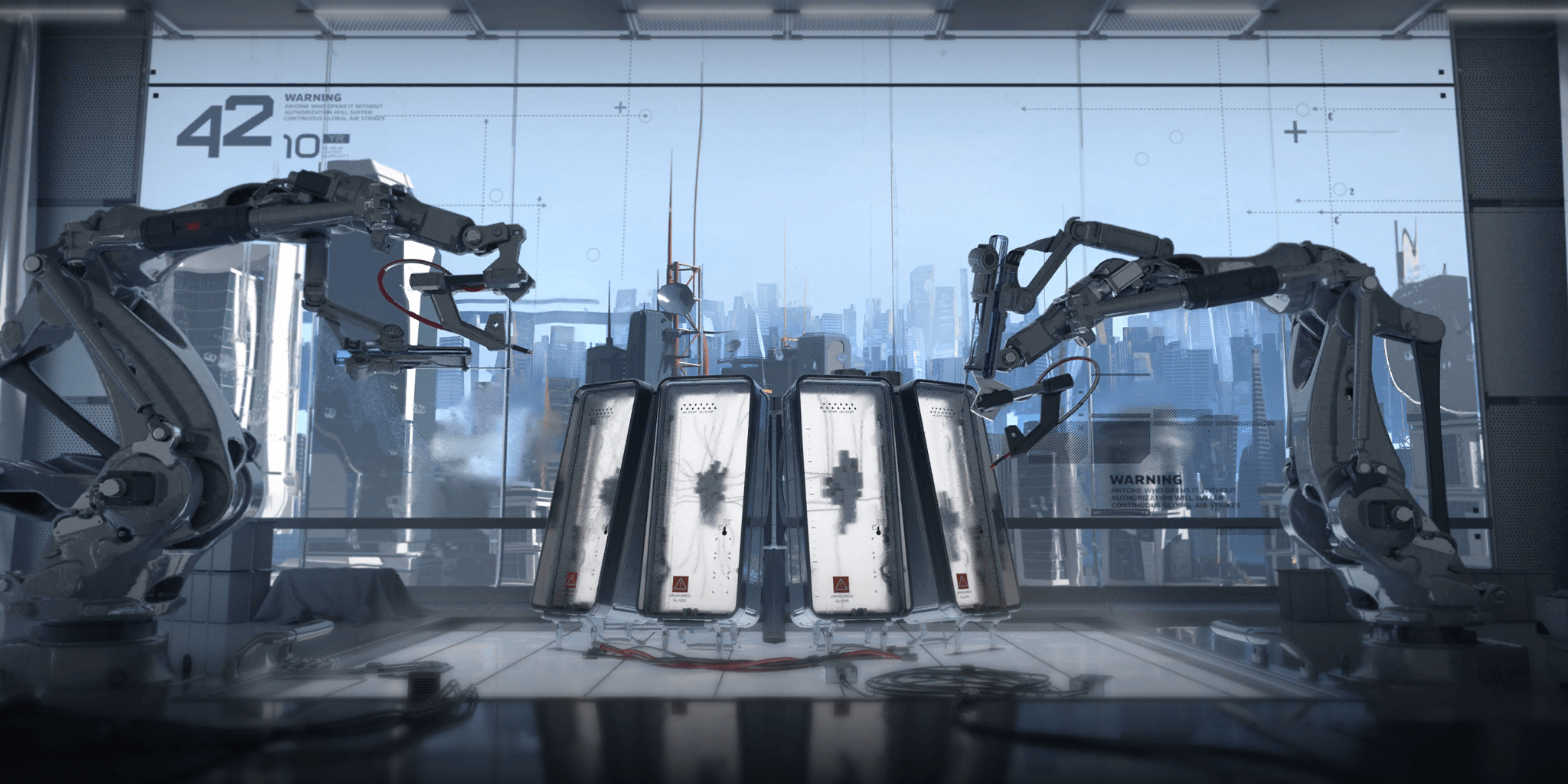
Project Neural Cloud was a 2-month collaboration in 2060 between the International Institute of Quantum Sciences (IIQS) and Important Operations Prototype. It was led by 42Lab, with assistance from the renowned AI and Doll researcher Persicaria in the form of a Doll made in her image. The project recruitment period began in 2057 and ended in mid-2058. In late 2060, the official "Project Neural Cloud" trials were launched at the 42Lab Institute of Artificial Intelligence. The Commander takes up the role of the former “Professor” - the lead researcher and supervisor of Project Neural Cloud.
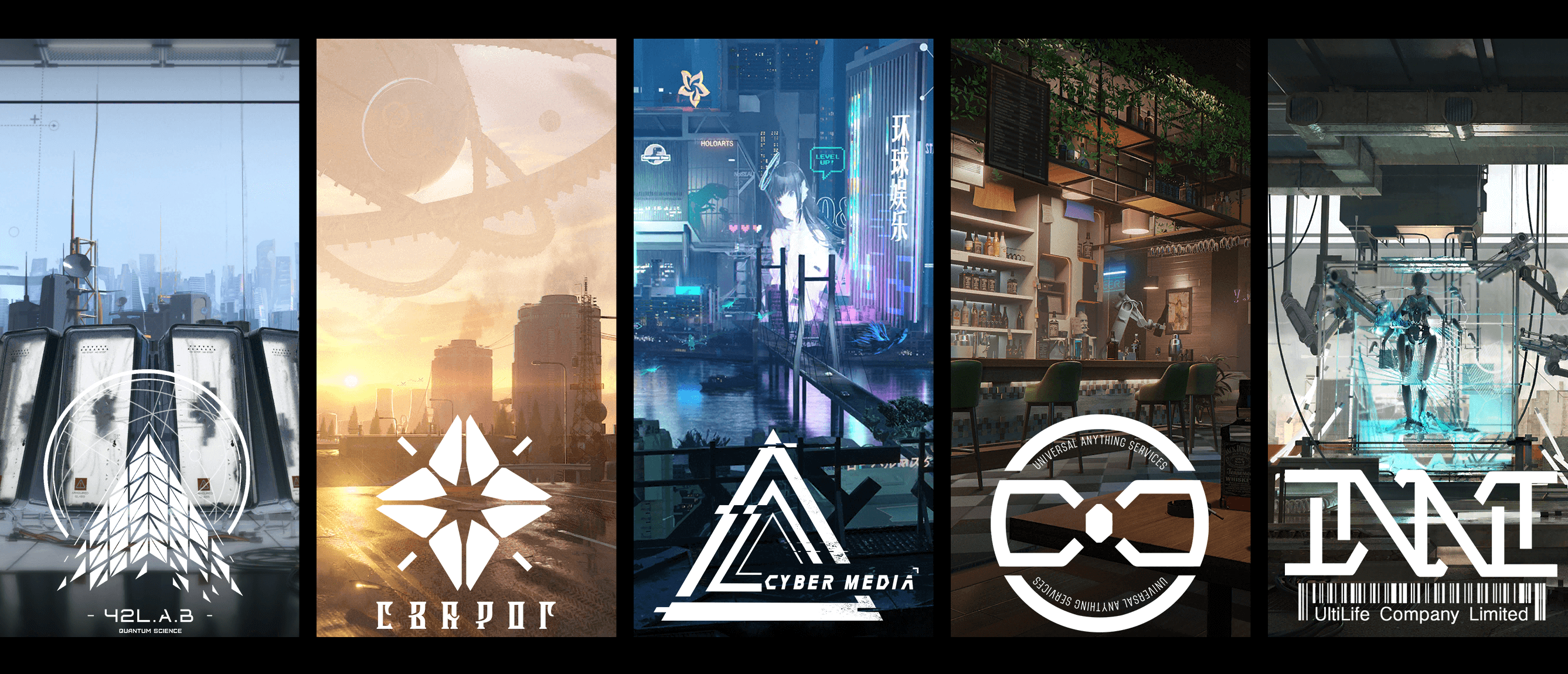
42Lab, Svarog Heavy Industries, Cyber Media, Universal Anything Services, and Ultimate Life Holdings (UltiLife).
During the project, willing owners across the world donated their Dolls to the program. Using 42Lab’s “Magrasea Super Cloud Server”, the goal of the test was the creation of a new neural cloud system through the fusion of various quantum computing and AI technologies for second-generation Dolls.
Originally, when a Doll's neural cloud was seriously damaged or destroyed, their neural cloud could only be reverted back to a base factory state. The hope was that the modern system would grant better security and protection of Dolls’ memory data. This system would reduce the costs of manufacturing and maintaining Dolls through the creation of neural cloud backups. These backups would minimize the loss of data in the event a Doll's body was damaged or destroyed. As long as a backup exists, a Doll can be reverted up to the point of the backup's creation. At the end of 2060, the modern neural cloud technology was declared a success by 42Lab.
The story begins on September 23rd, 2063, when Professor Persicaria and the G&K Commander investigate what happened three years ago during the project. Uploading their mind into an offsite backup of Magrasea, the Commander assumes the role of the “Professor”, seeking the truth about what happened three years ago. It becomes the Commander's goal to save the Dolls trapped in the backup and discover the fate of the original Professor who disappeared.
A further deep dive into the setting of Neural Cloud can be found here.
Sangvis Ferri Manufacturing & Lycoris - 2057-2061
As Persica completed the second generation of Tactical-Dolls in the late 2050s, Lycoris continued his research at the labs of Sangvis Ferri. His research mainly consisted of AI algorithms and module design for Dolls, but he'd also been working on his own AI with self-adjusting algorithms. This “Elisa”, as he called it, had been in its earliest developmental stage during late WWIII but was put on hold when he was recruited to work under IOP. He wanted Elisa to be what he described as the “perfect AI” - an AI to judge all others on, one indistinguishable from human intelligence.
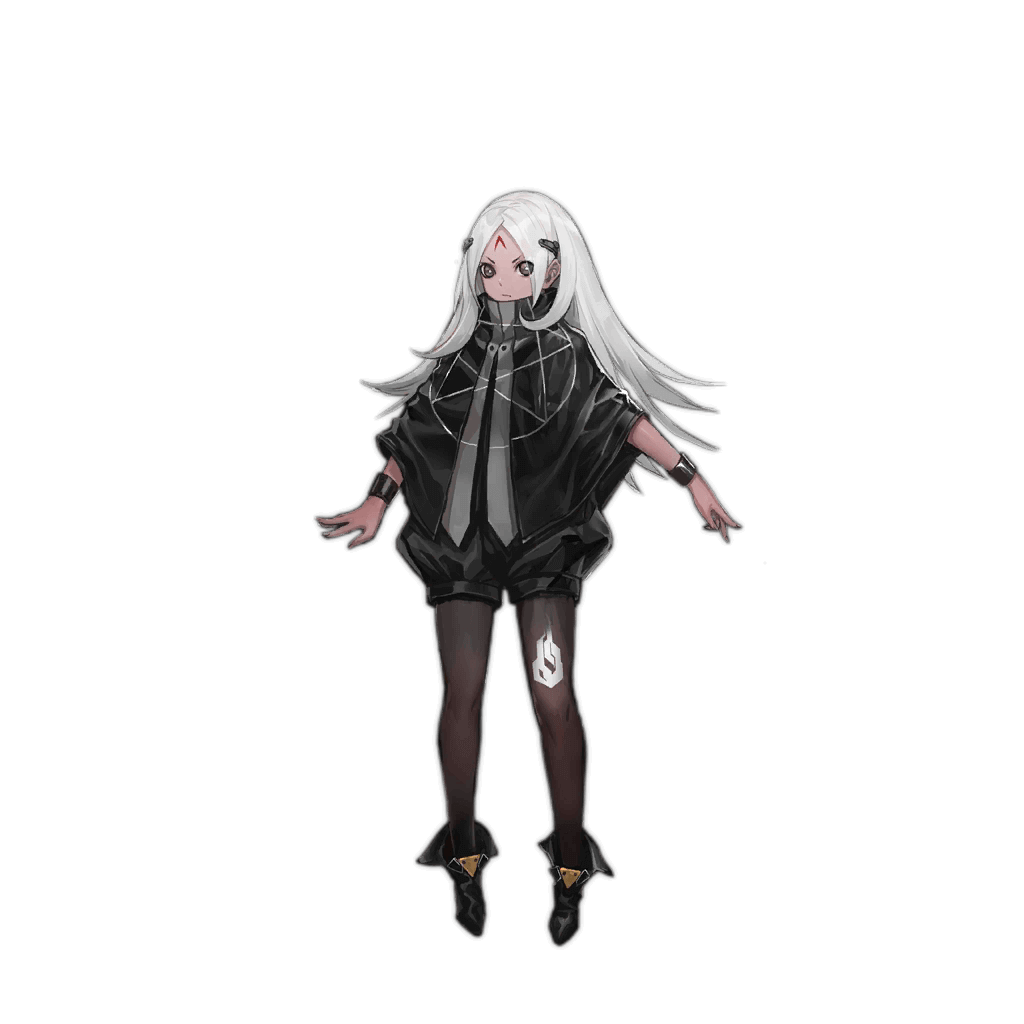
Elisa, the Sangvis Ferri Mastermind AI.
In contrast to Persica’s imprint technology, Lyco chose an alternative to arming Dolls. Rather than perfect the compatibility between a Doll and pre-existing firearms, he decided to upgrade the arsenals of Sangvis Dolls with new handheld particle weapons. Due to a lack of ASST software, Sangvis Dolls were made to fulfill various niches. While this made them less proficient with a variety of weapons, they performed exceptionally in the niche they were equipped for. However, Lyco and the rest of SF’s research, development, and production came to a sudden halt after the Butterfly Incident in late 2061.
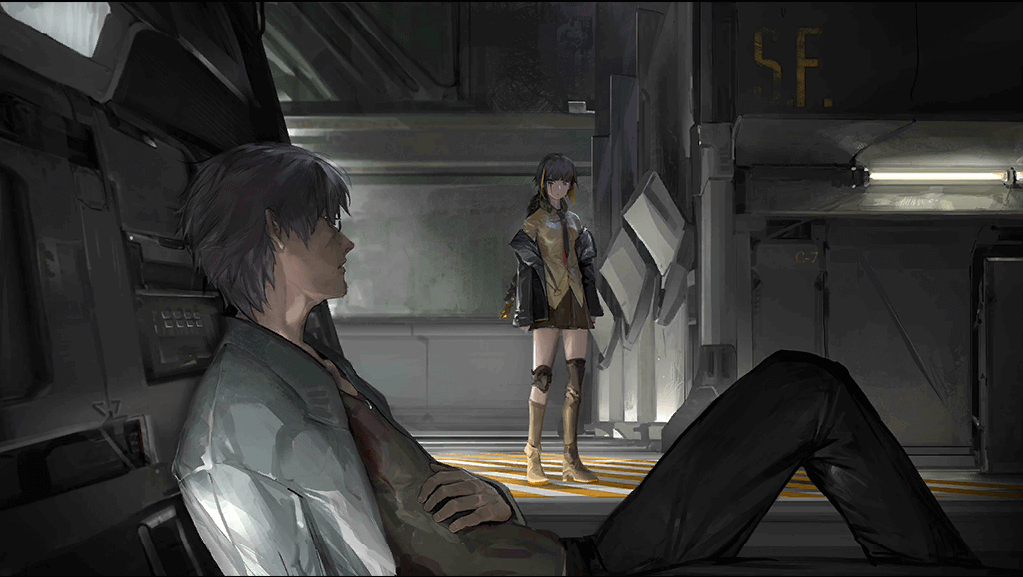
Lycoris' last moments during the Butterfly Incident.













